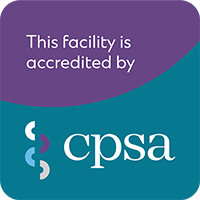At risk of opening a can of worms with my professional colleagues, this question really needs to
be asked. It is not uncommon in the insurer-funded Albertan landscape for people with
prolonged pain following a whiplash injury to still be receiving treatment, and significant volumes
of treatment well into chronicity – that is to say, at least 3 months post-injury.
To put this into context, epidemiological studies demonstrate that approximately 50% of people
injured in a motor vehicle collision continue to report symptoms 6-12 months later. Thus, it
makes sense, that a considerable number of patients will need ongoing care for prolonged
periods. That is not in dispute. But, are patients receiving the right care or best care or do we
even know what that is? Traditionally, patients attend conservative care that generally involves
a combination of advice, education, reassurance, hands-on (manual) and exercise therapy. And
some people continue to receive some form of passive therapy involving electrical modalities –
which, honestly I provided in abundance upon graduation in the early ‘90s pre-Brit Pop and
around the time when Nirvana ruled the airwaves with Nevermind. Now, although Nirvana
instituted a change in the music landscape resulting in grunge taking hold, the less said about
electrical modalities the better.
However, clinical trials started to appear, which investigated the role of conservative care in
treating people with chronic pain following whiplash injury. So, what have these trials told us
about the , benefits of conservative therapy as outlined above.
Unfortunately, for those heavily invested in these treatments, the various methodologically rigorous trials performed only demonstrate a modest effect (1-5) . That is, some people may respond, and if they do, the effects will be modest. These trials have investigated exercise alone, exercise + behavioural change, manual therapy, manual therapy + exercise therapy. Now, why may these results be at face value so disappointing? Many reasons are postulated – the main one being that people with chronic whiplash have a variety of symptoms that are unlikely to respond to a traditional hands-on or predominant exercise-based response. Given the nature of symptoms, which may include significant psychological distress, posttraumatic stress symptoms, anxiety and depressive symptoms and fear of movement, then it is probably not surprising that interventions directed at these symptoms may have better results. To that end, relief is near, with recent trials addressing these concerns demonstrating
improved outcomes. One such study implemented stress inoculation training early post-whiplash injury, which resulted in a significant reduction of pain and disability 3-months later. Similarly, two recent trials in low back pain; one using a combination of cognitive behavioural principles with exercise directed at the individual level, successfully reduced pain-related disability, and the other aimed at reducing the fear associated with pain and rephrasing one’s relationship with pain through Pain Reprocessing Therapy demonstrated robust reductions in pain and disability.
Thus, clinical trials continue to assist us moving forwards in providing appropriate treatment for people with persistent pain. If you’re a patient, then look for healthcare providers that can manage your overall symptom profile, as research suggests that your chances of an improved outcome will be greater.
References:
- M. J. Stewart et al., Randomized controlled trial of exercise for chronic whiplash-
associated disorders. Pain 128, 59-68 (2007). - G. Jull, M. Sterling, J. Kenardy, E. Beller, Does the presence of sensory hypersensitivity
influence outcomes of physical rehabilitation for chronic whiplash?–A preliminary RCT.
Pain 129, 28-34 (2007). - I. Ris et al., Does a combination of physical training, specific exercises and pain
education improve health-related quality of life in patients with chronic neck pain? A
randomised control trial with a 4-month follow up. Man Ther 26, 132-140 (2016). - M. L. Ludvigsson, G. Peterson, S. O’Leary, A. Dedering, A. Peolsson, The effect of neck-specific exercise with, or without a behavioral approach, on pain, disability, and self-
efficacy in chronic whiplash-associated disorders: a randomized clinical trial. Clin J Pain
31, 294-303 (2015). - Z. A. Michaleff et al., Comprehensive physiotherapy exercise programme or advice for
chronic whiplash (PROMISE): a pragmatic randomised controlled trial. Lancet pii:
S0140-6736(14)60457-8. doi: 10.1016/S0140-6736(14)60457-8, (2014).





